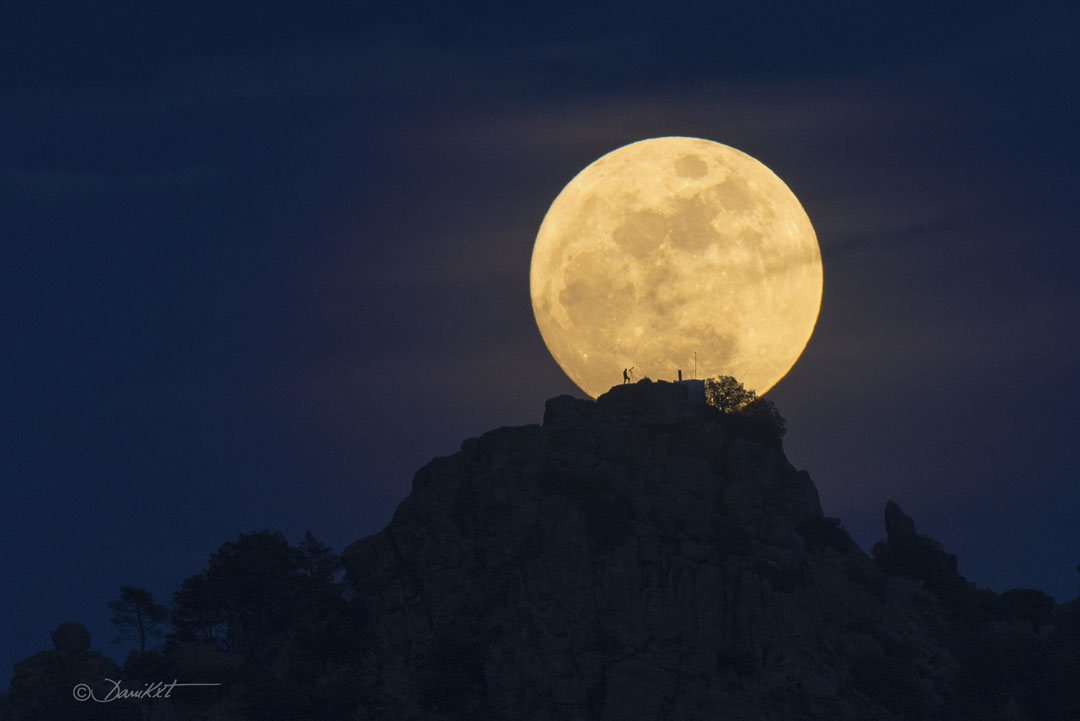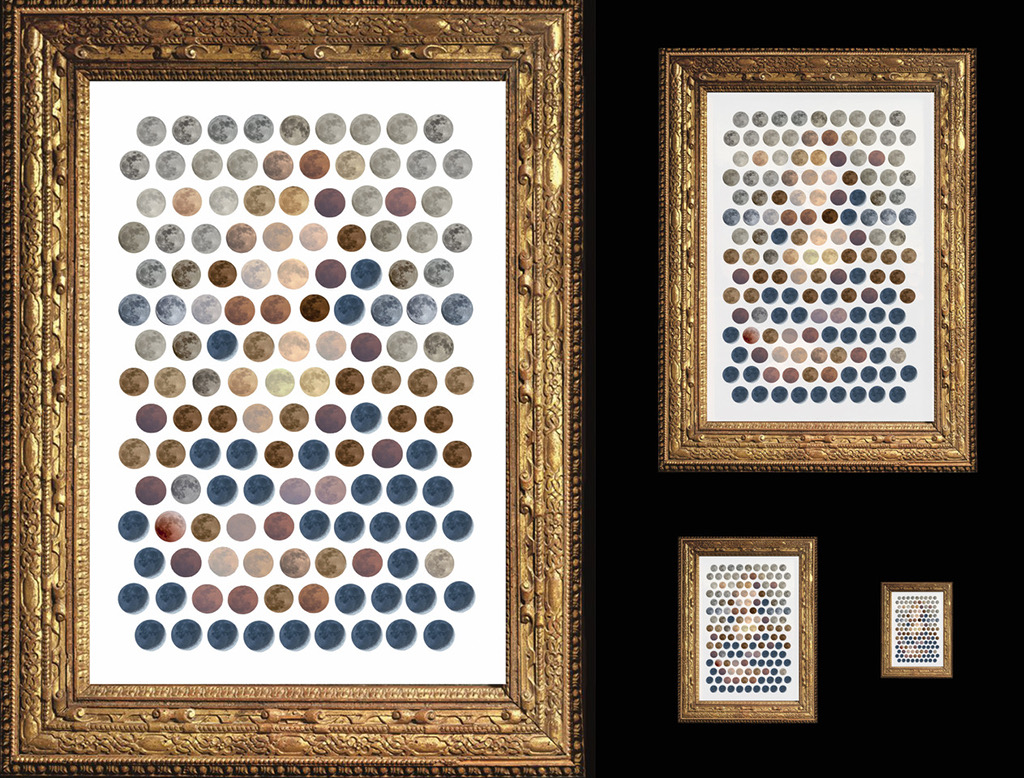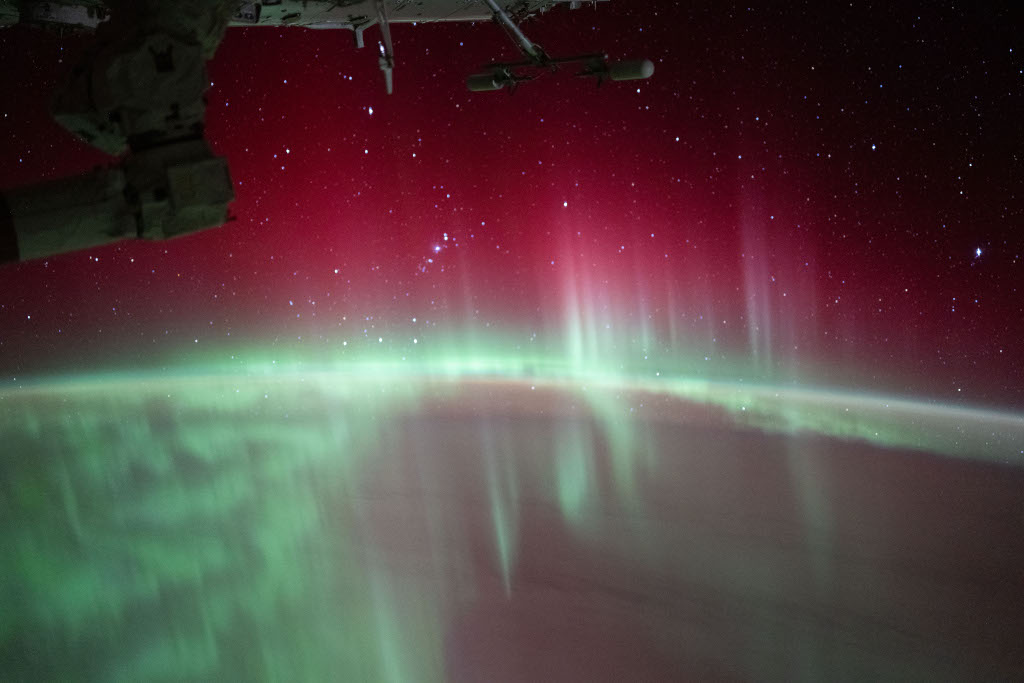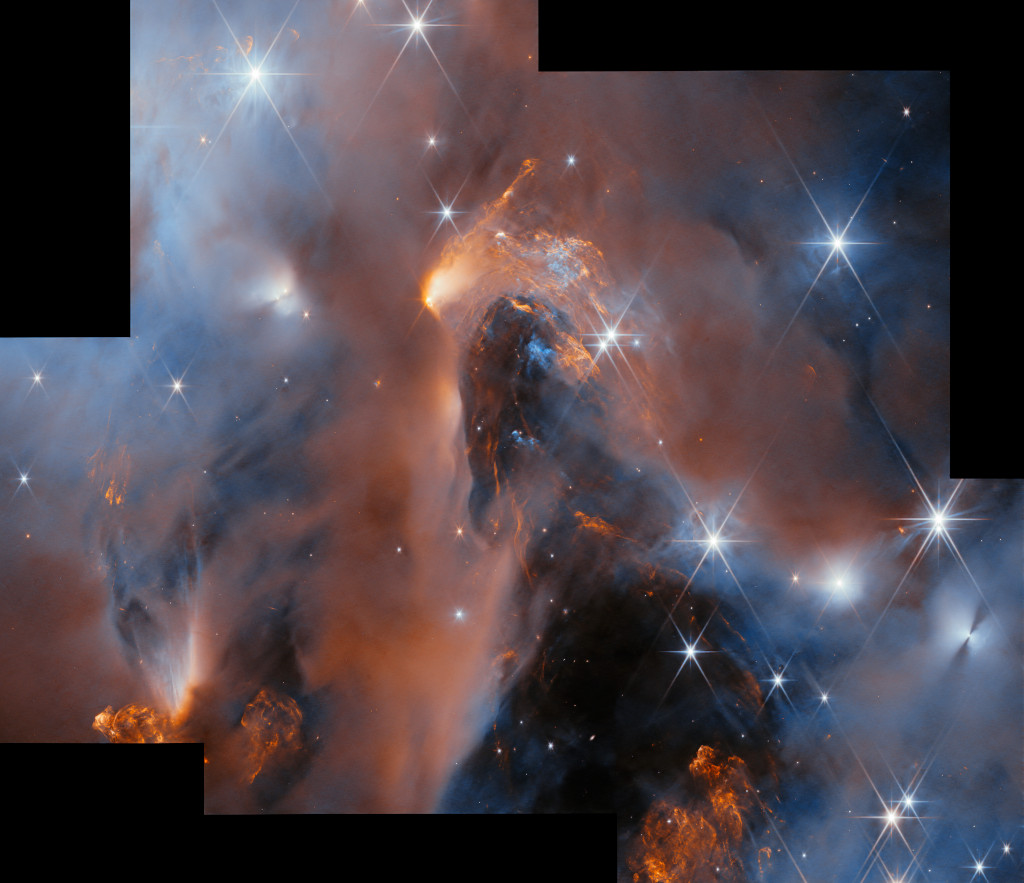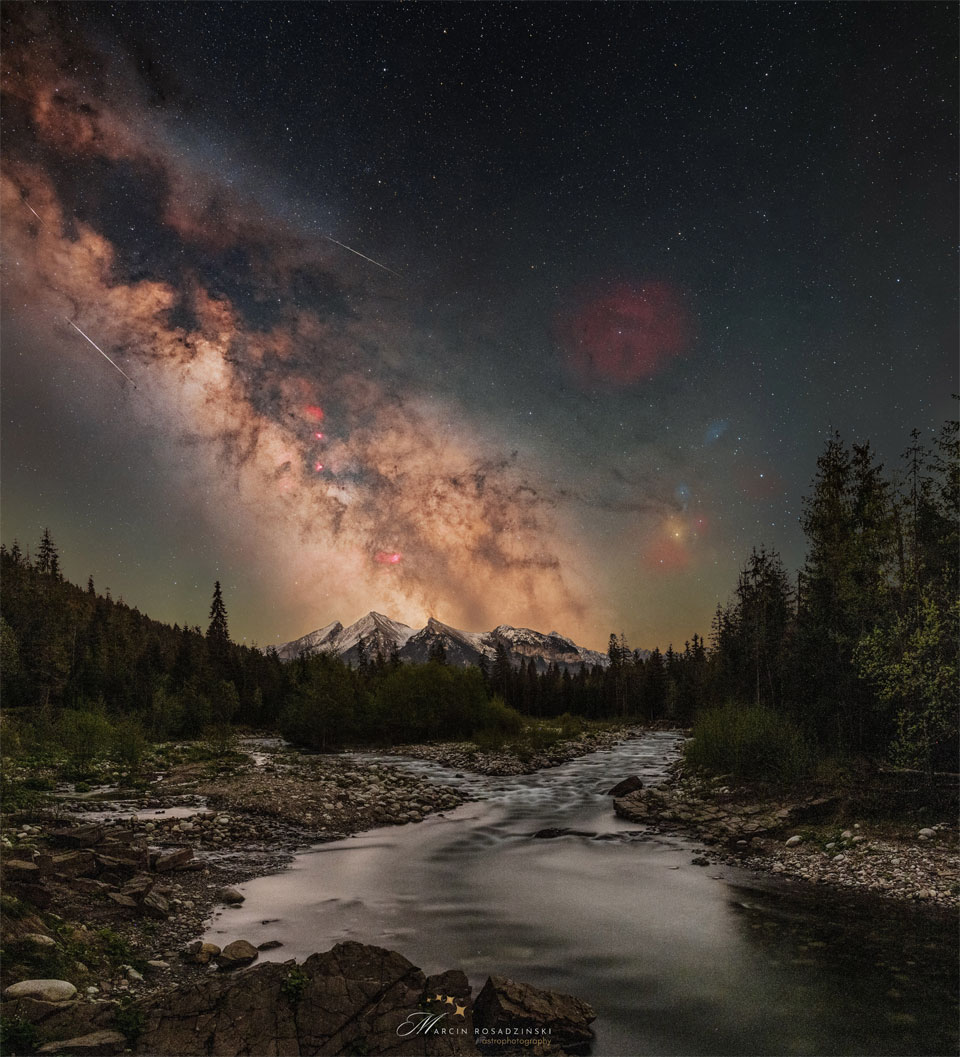Nombre total de pages vues
15/09/2024
INVENTIONS A L'HORIZON 2050 - La ferme verticale nourrira les citadins
ASTRONOMY - Find the Man in the Moon
2024 September 15
Image Credit & Copyright: Dani Caxete
Explanation: Have you ever seen the Man in the Moon? This common question plays on the ability of humans to see pareidolia -- imagining familiar icons where they don't actually exist. The textured surface of Earth's full Moon is home to numerous identifications of iconic objects, not only in modern western culture but in world folklore throughout history. Examples, typically dependent on the Moon's perceived orientation, include the Woman in the Moon and the Rabbit in the Moon. One facial outline commonly identified as the Man in the Moon starts by imagining the two dark circular areas -- lunar maria -- here just above the Moon's center, to be the eyes. Surprisingly, there actually is a man in this Moon image -- a close look will reveal a real person -- with a telescope -- silhouetted against the Moon. This well-planned image was taken in 2016 in Cadalso de los Vidrios in Madrid, Spain.
14/09/2024
ASTRONOMY - The Moona Lisa
2024 September 14
Image Credit & Copyright: Gianni Sarcone and Marcella Giulia Pace
Explanation: Only natural colors of the Moon in planet Earth's sky appear in this creative visual presentation. Arranged as pixels in a framed image, the lunar disks were photographed at different times. Their varying hues are ultimately due to reflected sunlight affected by changing atmospheric conditions and the alignment geometry of Moon, Earth, and Sun. Here, the darkest lunar disks are the colors of earthshine. A description of earthshine, in terms of sunlight reflected by Earth's oceans illuminating the Moon's dark surface, was written over 500 years ago by Leonardo da Vinci. But stand farther back from your screen or just shift your gaze to the smaller versions of the image. You might also see one of da Vinci's most famous works of art.
13/09/2024
PLANTES FASCINANTES - Rafflesia zollingeriana - la plus grande plante du monde
ASTRONOMY - Aurora Australis and the International Space Station
2024 September 13
Image Credit: NASA, ISS Expedition 71
Explanation: This snapshot from the International Space Station was taken on August 11 while orbiting about 430 kilometers above the Indian Ocean, Southern Hemisphere, planet Earth. The spectacular view looks south and east, down toward the planet's horizon and through red and green curtains of aurora australis. The auroral glow is caused by emission from excited oxygen atoms in the extremely rarefied upper atmosphere still present at the level of the orbiting outpost. Green emission from atomic oxygen dominates this scene at altitudes of 100 to 250 kilometers, while red emission from atomic oxygen can extend as high as 500 kilometers altitude. Beyond the glow of these southern lights, this view from low Earth orbit reveals the starry sky from a southern hemisphere perspective. Stars in Orion's belt and the Orion Nebula are near the Earth's limb just left of center. Sirius, alpha star of Canis Major and brightest star in planet Earth's night is above center along the right edge of the southern orbital skyscape.
INVENTIONS A L'HORIZON 2050 - Le robot ouvrier envahira les usines
12/09/2024
ASTRONOMY - Young Star Cluster NGC 1333
2024 September 12
Image Credit: ESA/Webb, NASA, CSA, A. Scholz, K. Muzic, A. Langeveld, R. Jayawardhana
Explanation: This spectacular mosaic of images from the James Webb Space Telescope peers into the heart of young star cluster NGC 1333. A mere 1,000 light-years distant toward the heroic constellation Perseus, the nearby star cluster lies at the edge of the large Perseus molecular cloud. Part of Webb's deep exploration of the region to identify low mass brown dwarf stars and free floating planets, the space telescope's combined field of view spans nearly 2 light-years across the dusty cluster's turbulent stellar nursery. In fact, NGC 1333 is known to harbor stars less than a million years old, though most are hidden from optical telescopes by the pervasive stardust. The chaotic environment may be similar to one in which our own Sun formed over 4.5 billion years ago.
11/09/2024
POISSONS EXOTIQUES - Le baliste clown
ASTRONOMIE NEWS - L’éclipse partielle de Lune du 18 septembre 2024

ASTRONOMY - A Night Sky over the Tatra Mountains
2024 September 11
Image Credit: Marcin Rosadziński; Text: Natalia Lewandowska (SUNY Oswego)
Explanation: A natural border between Slovakia and Poland is the Tatra Mountains. A prominent destination for astrophotographers, the Tatras are the highest mountain range in the Carpathians. In the featured image taken in May, one can see the center of our Milky Way galaxy with two of its famous stellar nurseries, the Lagoon and Omega Nebula, just over the top of the Tatras. Stellar nurseries are full of ionized hydrogen, a fundamental component for the formation of Earth-abundant water. As a fundamental ingredient in all known forms of life, water is a crucial element in the Universe. Such water can be seen in the foreground in the form of the Bialka River.
ASTRONOMY - Mystery: Little Red Dots in the Early Universe
2025 December 24 Mystery: Little Red Dots in the Early Universe Image Credit: NASA , ESA , CSA , STScI , JWST ; Dale Kocevski ( Colb...
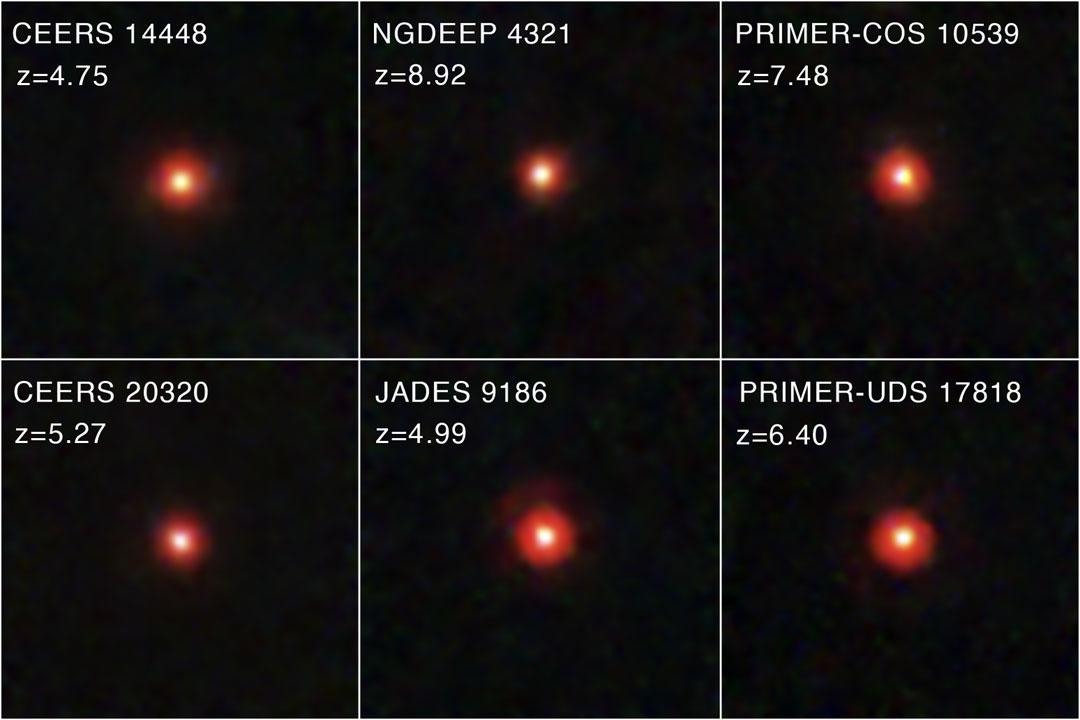
-
2022 September 26 All the Water on Planet Earth Illustration Credit: Jack Cook, Adam Nieman, Woods Hole Oceanographic Institution ; Data ...
-
2025 May 11 The Surface of Venus from Venera 14 Image Credit: Soviet Planetary Exploration Program , Venera 14 ; Processing & Copyri...

